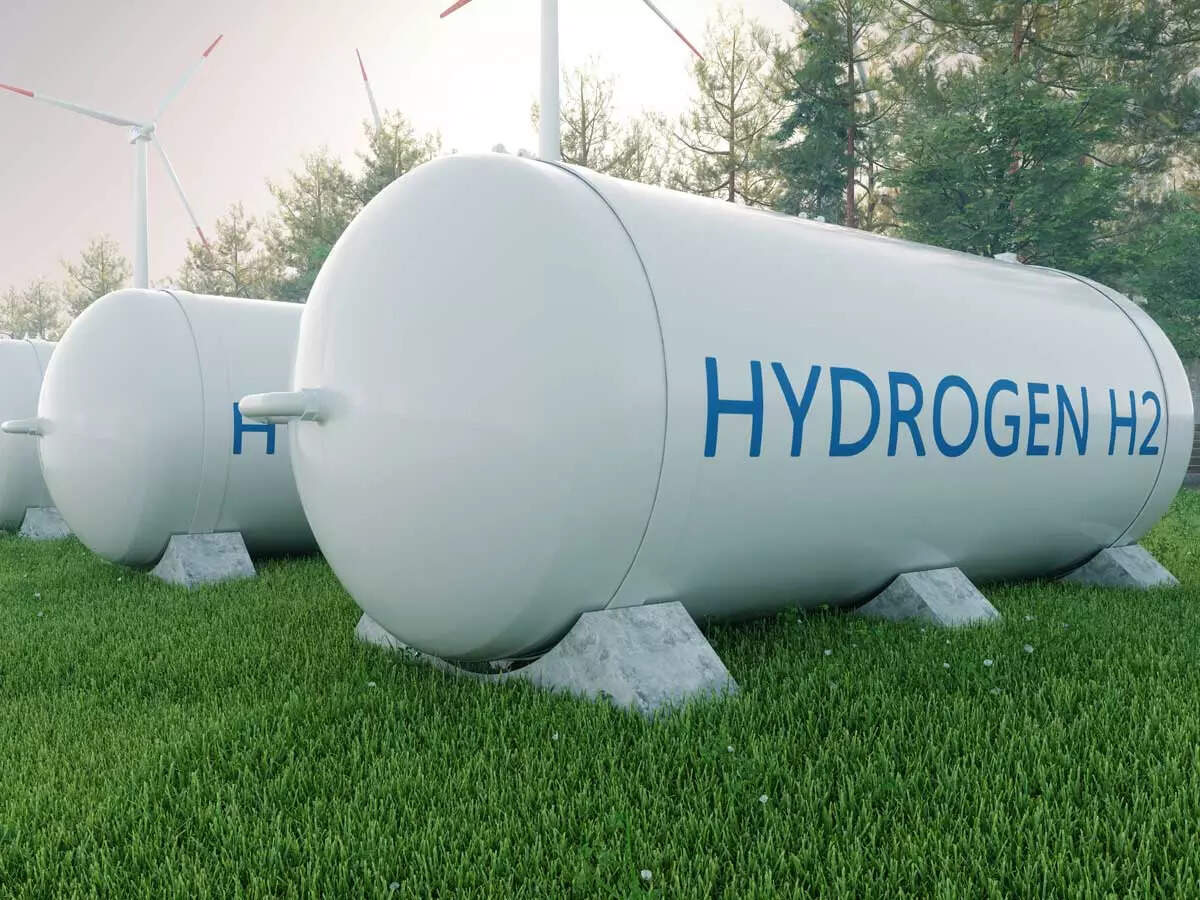
Green hydrogen (GH2) will be crucial in the global and Indian green energy transition. To realise the true potential of GH2, significant resources must be dedicated to boosting manufacturing capabilities to achieve the “1-1-1 cost target” (USD 1 per 1 Kilogram of GH2 in 1 decade) to make it competitive with grey hydrogen. Developing diverse Fuel Cell (FC) technologies can facilitate expeditious adoption of GH2 in multiple sectors, including mobility, energy, and industrial processes. With this context, Indigenous development of diverse Fuel Cell (FC) technologies can facilitate the rapid adoption of GH2 in carbon-intensive sectors such as mobility, energy, and industrial.
Understanding Fuel Cells
FC technology is a reliable and efficient technology that converts the chemical energy of fuels like GH2 into electricity, which has applications in industries that need energy. FCs are typically packaged in modular units, and multiple of them can be connected to form large stacks to scale up power generation. FCs can be characterised based on their operating temperature (high/low), type of electrolyte used, fuels consumed, and platinum group metal used as catalysts.
Fuel Cell: Deployment across sectors.
Deployments of FC have recently gained attention in the mobility sector, including shipping, railways, and off-road vehicles. FC-electric mobility solutions can complement battery-powered vehicles. The time required to refuel FC vehicles can be considered at par with diesel-powered vehicles. Additionally, cutting-edge safety standards achieved in designing and manufacturing hydrogen storage tanks allow for sufficient fuel storage for long-range applications. Other evolving applications of FC technology include stationary power solutions for data centers, smart buildings, and ‘tri-gen’ manufacturing (where electricity, heat, and hydrogen are used for treating glass, metals, hydrocarbon-based products, etc.). As the contribution of renewable energy to the country’s power mix increases, FC technology can also be deployed in the long-duration energy storage value chain to manage the electricity grid’s stability.
Another key benefit of GH2 fuel cell vehicles is they can significantly reduce the imbalance in the context of access to critical minerals (e.g., lithium). India would prefer to look for alternative technology instead of relying only on lithium-powered batteries, which are scarce and available in a few countries.
Reducing Fuel Cell System Costs – Scaling up manufacturing
Cost competitiveness is one of the key drivers for the large-scale adoption of FC, especially in the supply chain and mobility sectors. As per a United States Department of Energy study, the cost projections for a 275 kW PEM FC are USD ~300/kW when 1000 systems are manufactured per annum. This cost drops to almost half, i.e., ~160/kW, when 100 thousand systems are manufactured annually. However, this is still twice as costly as the FY 2030 target of USD 80/kW for the technology to be accepted by the heavy-duty vehicle ecosystem. Riding on improvement areas like manufacturing efficiency, economies of scale, increased power density, better stack, and balance of plant components, the ultimate target is to touch the magic number of USD 60/kW that can truly maximise the true potential of FC technology.
India’s strategic technology development programs should sync with the ‘Make in India’ and ‘Production Linked Incentive’ schemes to achieve world-class FC manufacturing through economies of scale. As GH2 is considered a strategic priority for achieving energy security, India can invite and facilitate national and global players to collaborate and establish world-scale manufacturing units within the country. Such economies of scale alone can help reduce the FC cost by almost 30% and serve as a quick win. Moreover, improvements in catalyst efficiencies, bipolar membrane FCs, reversible FCs, etc., are also envisaged as targets for the upcoming decade.
Roadmap for Fuel Cells: Near-Term and Long-Term
India’s FC technology development roadmap should aim to achieve targets guided by end-use requirements measured in terms of performance, life cycle cost-competitiveness, durability, system design, etc. These metrics must be collaboratively quantified and agreed upon by governments, regulatory bodies, industry, academia, and start-ups working in this space. In the near term, several developed countries will prioritise FC applications in heavy-duty mobility applications. Heavy payloads, shorter allowances for refuelling, and long-distance ranges characterise this segment. India can holistically approach this opportunity by streamlining the entire value chain, starting with raw material availability, ancillary component manufacturing, system development, smart manufacturing, and efficient supply chains. Such measures can bring cost-competitiveness and quality FCs for national and global markets. This can provide a fillip to locking-in contracts for liftoff of FCs for deployment for low/sero-emission heavy-duty vehicles. In the long term, learnings from the above program can be used to develop solutions to decarbonise India’s railways, shipping, construction & mining vehicles/equipment. FCs can also be versatile in applications in the country’s energy sector for stationary power and storage uses.
As envisaged by India’s NITI Aayog, GH2 can significantly cut CO2 emissions, combat climate change, and anchor the country’s 2070 Net-sero ambition. Envisaging FC as an ‘enabler’ rather than a mere product can help the country establish itself as a pioneer in creating comprehensive market-ready green ecosystems. By sharing this expertise, India can help the entire developing world leapfrog to a greener future without going through the ‘carbon-intensive’ development phase.

